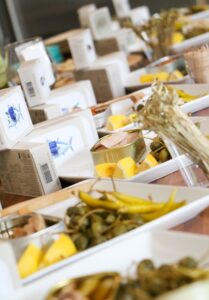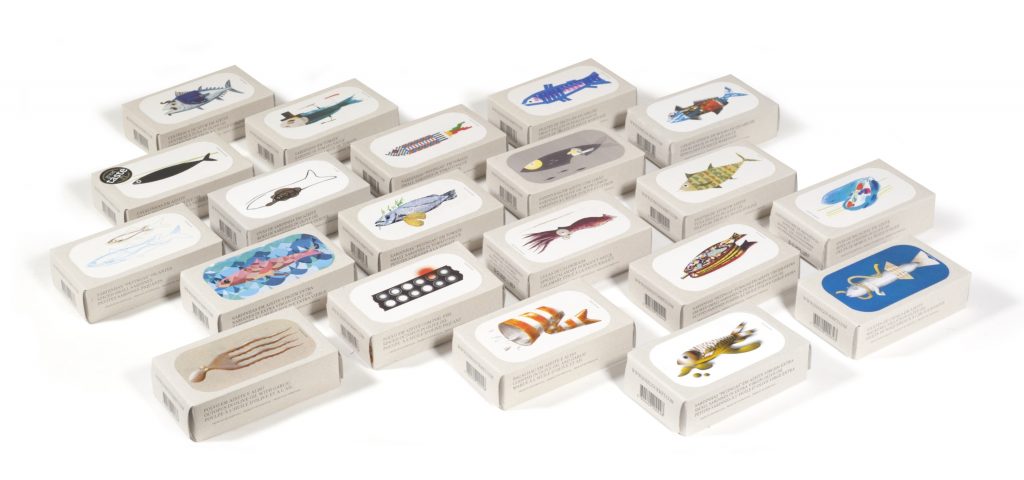I love a good food trend as much as the next person. But what I love more is a bonafide food revival. Here’s the difference:
A food trend starts with an innovative hack or recipe twist and makes waves on social media in mere days. Your favorite food bloggers offer up their takes on it, then said trend is murdered by big chains trying to get in on the action. It’s a windfall experience, left to die a lonely death with only faint memories of their once viral hashtags and millenial social love.
 The story of a food revival started centuries ago, back when food was a means of survival. Food was fuel then, made delicious by generations of tweaks and passed down techniques. Sure, they may have faded to make way for said trends above, but they’ve never fully disappeared. The revival begins quietly on the shelves of your favorite stores. It gains traction slowly after one recommendation to take it home and try it for yourself, one Google session to figure out what to do with it, one bottle of wine to pair it with. Small articles in Bon Appetit or Food and Wine will mention it, your friends will say they’ve tried it. Your mom might even send you a newspaper clipping about it. Before you know it, you’ve changed your eating habits to incorporate it, developed a tiered list of favorite brands, traditional preparations, and recipes using it at home, and now you’re sending clippings back to your mom about even better options than she’d originally recommended.
The story of a food revival started centuries ago, back when food was a means of survival. Food was fuel then, made delicious by generations of tweaks and passed down techniques. Sure, they may have faded to make way for said trends above, but they’ve never fully disappeared. The revival begins quietly on the shelves of your favorite stores. It gains traction slowly after one recommendation to take it home and try it for yourself, one Google session to figure out what to do with it, one bottle of wine to pair it with. Small articles in Bon Appetit or Food and Wine will mention it, your friends will say they’ve tried it. Your mom might even send you a newspaper clipping about it. Before you know it, you’ve changed your eating habits to incorporate it, developed a tiered list of favorite brands, traditional preparations, and recipes using it at home, and now you’re sending clippings back to your mom about even better options than she’d originally recommended.
That’s the food revival. Unassuming at first, but impactful. Think of the difference between $100 gourmet burgers and Greek yogurt, artisan cupcakes and fermented foods…you get the idea. Spendy burgers and all things cupcake came and went. Yes, they’re still around, but you may not feel as inclined to keep ingredients on hand to prepare on a whim or boast their consumption on your Insta stories. Greek yogurt and fermented items found their way into our hearts and refrigerators and will remain. Whether it’s for solo snacking or adding to recipes, the health benefits and lingering flavor keeps us all coming back for more.
So, I’m here to tell you what’s next. Now remember, enter with an open mind. It’s time to get reacquainted with tinned seafood, my friends.
 This is not the mass-produced ‘Chicken of the Sea’ cans of tuna that ensnare dolphins and tuna alike. It is not flash-cooked and preserved in weird faux-brine water. It is not tasteless slop. Revival-worthy tinned seafood is the stuff of legend. Think small boats with three generations aboard—working together, catching together, selecting the very best to bring back to shore. Grandmothers oversee the preparation and preservation with strong opinions, heavy-handed seasoning, and a forever-furrowed brow.
This is not the mass-produced ‘Chicken of the Sea’ cans of tuna that ensnare dolphins and tuna alike. It is not flash-cooked and preserved in weird faux-brine water. It is not tasteless slop. Revival-worthy tinned seafood is the stuff of legend. Think small boats with three generations aboard—working together, catching together, selecting the very best to bring back to shore. Grandmothers oversee the preparation and preservation with strong opinions, heavy-handed seasoning, and a forever-furrowed brow.
 Once preserved, seafood does a magical thing and becomes even more delicious with time. The oil, sauce, or brine permeate the fibers and flesh and textures become soft and supple. Flavors commingle and rest until each tin is chosen for consumption. What was once a way to preserve precious proteins for the off-season is now a stalwart of tapas fare and ultra-sustainable because of its inherent nature, not because of a trend.
Once preserved, seafood does a magical thing and becomes even more delicious with time. The oil, sauce, or brine permeate the fibers and flesh and textures become soft and supple. Flavors commingle and rest until each tin is chosen for consumption. What was once a way to preserve precious proteins for the off-season is now a stalwart of tapas fare and ultra-sustainable because of its inherent nature, not because of a trend.
You’ll find one of the best in Jose Gourmet. Fish, bivalves, and mollusks are prepared traditionally with classic sauces and oils. There’s an option for every eater: mild and delicate or toothsome and full of flavor. Each tin is prepared with exceptional attention to detail, down to how each piece is artfully preserved in the tin, sealed for optimal preservation and flavor, and bound with eye-catching art and enchanting stories. For those of us residing in landlocked locales, this is the perfect way to start introducing seafood into our diets without breaking the bank. Roll back the lid on a tin, toss together a salad, and pour yourself a glass of wine. You’ll be transported to another place and time for as long as the tin takes to consume. You’ll begin craving the experience and the flavors and come back for more as often as I have this year. I’ll see you in the tinned seafood aisle.

